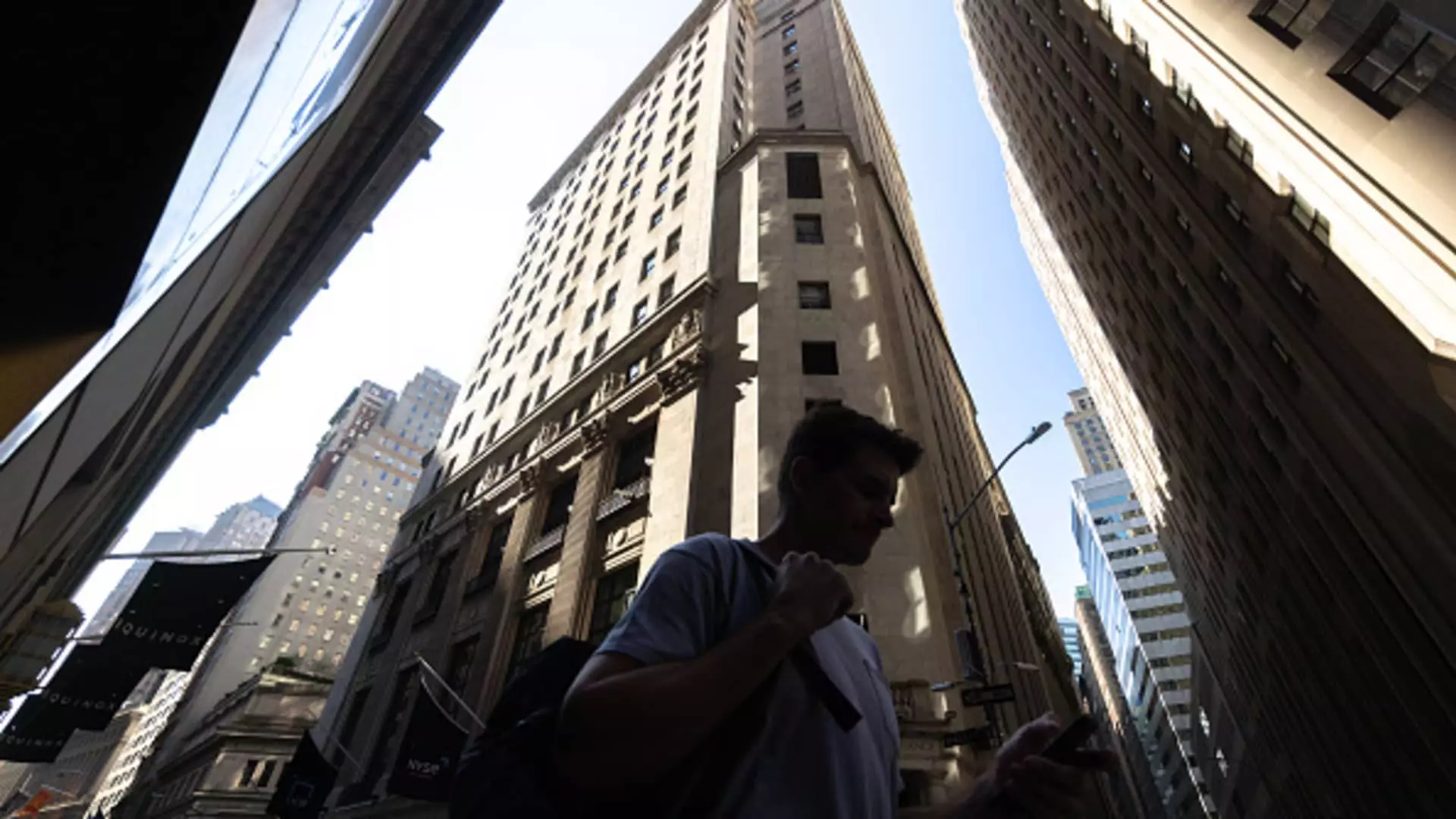The recent rapid rebound of market confidence following a significant sell-off in risky assets has raised concerns among experts in the financial industry. Christian Mueller-Glissmann, the head of asset allocation research at Goldman Sachs, believes that investors should not be too quick to dismiss the early August stocks slump as just a minor blip. Despite the initial market turmoil caused by fears of a U.S. recession and the unwinding of carry trades linked to the Japanese yen, the subsequent recovery has been surprisingly swift and robust. This resurgence in stock prices has prompted Mueller-Glissmann to warn that the market may be heading back to the same precarious position it was in just a month ago.
The sudden downturn in stock markets at the beginning of August was fueled by a combination of factors, including concerns about a looming recession in the United States and the impact of certain currency trades on stock prices. The S&P 500 experienced its most significant one-day loss since 2022, reflecting the high level of uncertainty and fear in the market at that time. However, the situation quickly changed with the Federal Reserve signaling a potential interest rate cut and positive economic indicators emerging from the U.S. This shift in sentiment led to a sharp increase in stock prices, erasing most of the losses incurred earlier in the month.
Despite the recent rally in stock prices, Mueller-Glissmann remains cautious about the sustainability of this trend. He points out that while the market has bounced back to its previous levels, risk appetite among investors has not fully recovered. This discrepancy between stock prices and risk sentiment is a cause for concern, as it indicates a potential disconnect between market fundamentals and investor behavior. Mueller-Glissmann suggests that the recent resiliency of safe-haven assets such as bonds, gold, and the Japanese yen may be a sign of lingering uncertainty and hesitance among investors.
Mueller-Glissmann emphasizes the importance of maintaining a balanced portfolio in times of market volatility. He notes that a 60/40 portfolio, consisting of 60% equities and 40% bonds, has performed well during the recent choppy market conditions. However, he warns that the protective buffer provided by bonds may not be as reliable in the current environment. As stocks continue to rise and risk appetite remains subdued, investors may need to reassess their risk exposure and take a more cautious approach to portfolio management. Mueller-Glissmann suggests that investors consider adjusting their risk allocations to account for the changing market dynamics and avoid being overly optimistic in their outlook.
While the rapid recovery of stock prices may be seen as a positive development, it is essential for investors to exercise caution and remain vigilant in monitoring market conditions. The potential disconnect between market sentiment and underlying fundamentals could lead to increased volatility and downside risks in the future. By adopting a prudent and strategic approach to portfolio management, investors can mitigate potential losses and position themselves more effectively in a changing market environment.

Leave a Reply